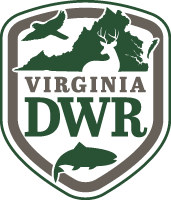Hatching has Started!
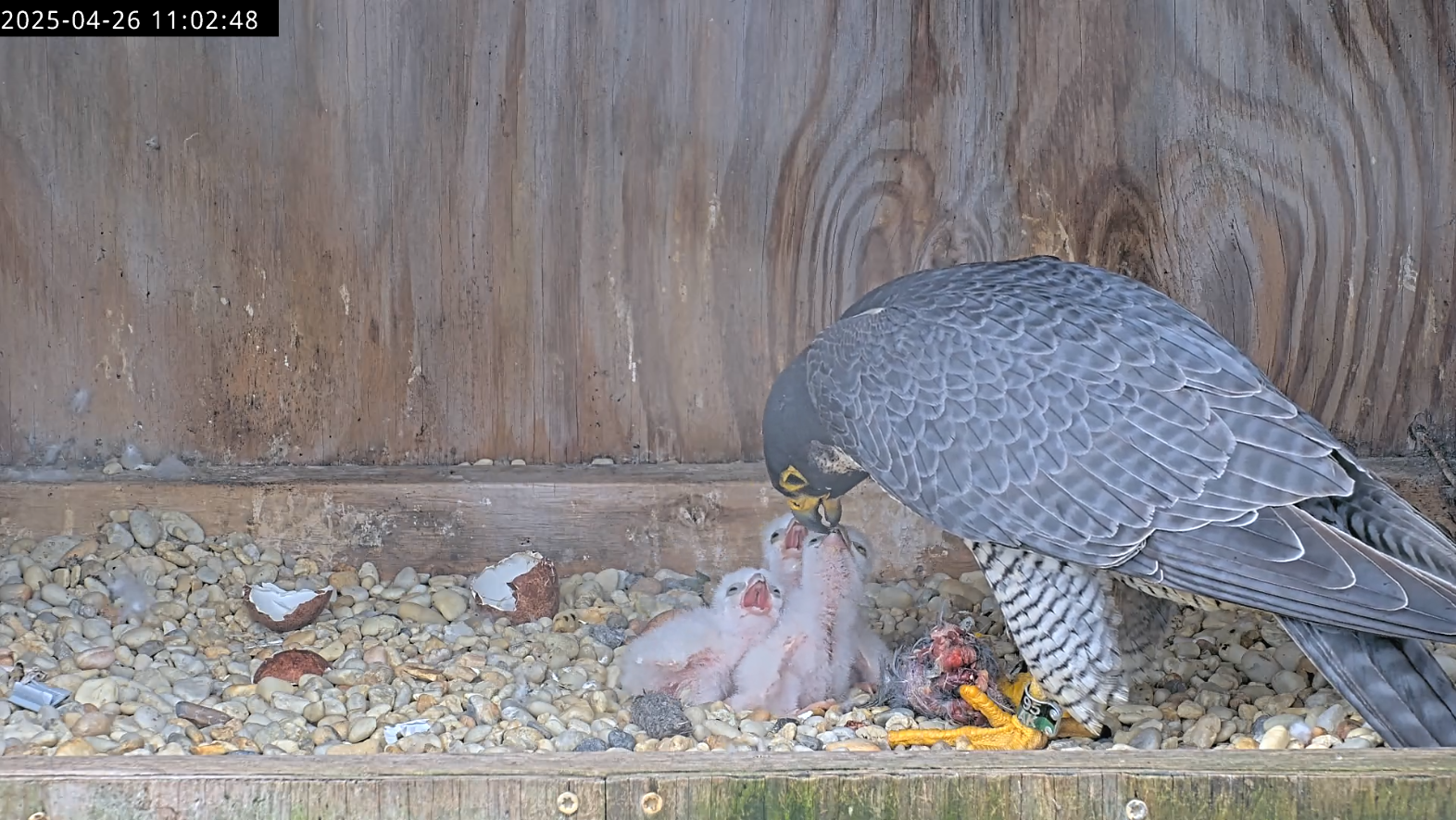
The female feeds her three newly hatched chicks.
4/26 update at 11:36 AM: A third chick hatched overnight at around 11:30 PM on 4/25. Several meals have been delivered to the chicks since this third hatch.
4/25 update at 12:14 PM: A second chick hatched overnight between 4/24 and 4/25. Both chicks appear to be doing well and received their first meal just before noon on 4/25.
We are happy to report that the as of 5:22 PM on Thursday, April 24th the first falcon chick has hatched. When a chick starts hatching, the first sign is a pip — which is the initial hole the chick makes in its egg. At least one, if not two, of the other eggs are currently pipping and as such we hope to have more chicks in the nest soon.
The act of hatching is a long and energetically demanding process for chicks, as they use an egg tooth (a small knob on top of their bill) to repeatedly peck and push into the pip in the egg, creating a large enough crack that they can eventually break through. This hammering is an exhausting process requiring the chick to take several rests throughout hatching. Overall, the entire process usually takes anywhere from 12 to 18 hours, but in some extreme cases it can take upwards of 72 hours. After the chick has finally hatched, it no longer needs its egg tooth, which falls off several days after its emergence from the egg.
Immediately after hatching, chicks are damp with lots of bare, pink skin exposed. However, within just a few short hours, they dry out taking on a much fluffier appearance due to their white, downy plumage which covers most of their body. Newly hatched falcons weigh approximately 30–40 grams (1.25 ounces) when they first hatch and are unable to fully thermoregulate (maintain core body temperature) for the first two weeks of life. This means the parents will continue to spend time on the nest “brooding” the chicks after they hatch and incubating the remaining eggs.
We will continue to closely monitor this new chick and hope to see the other eggs hatch soon!
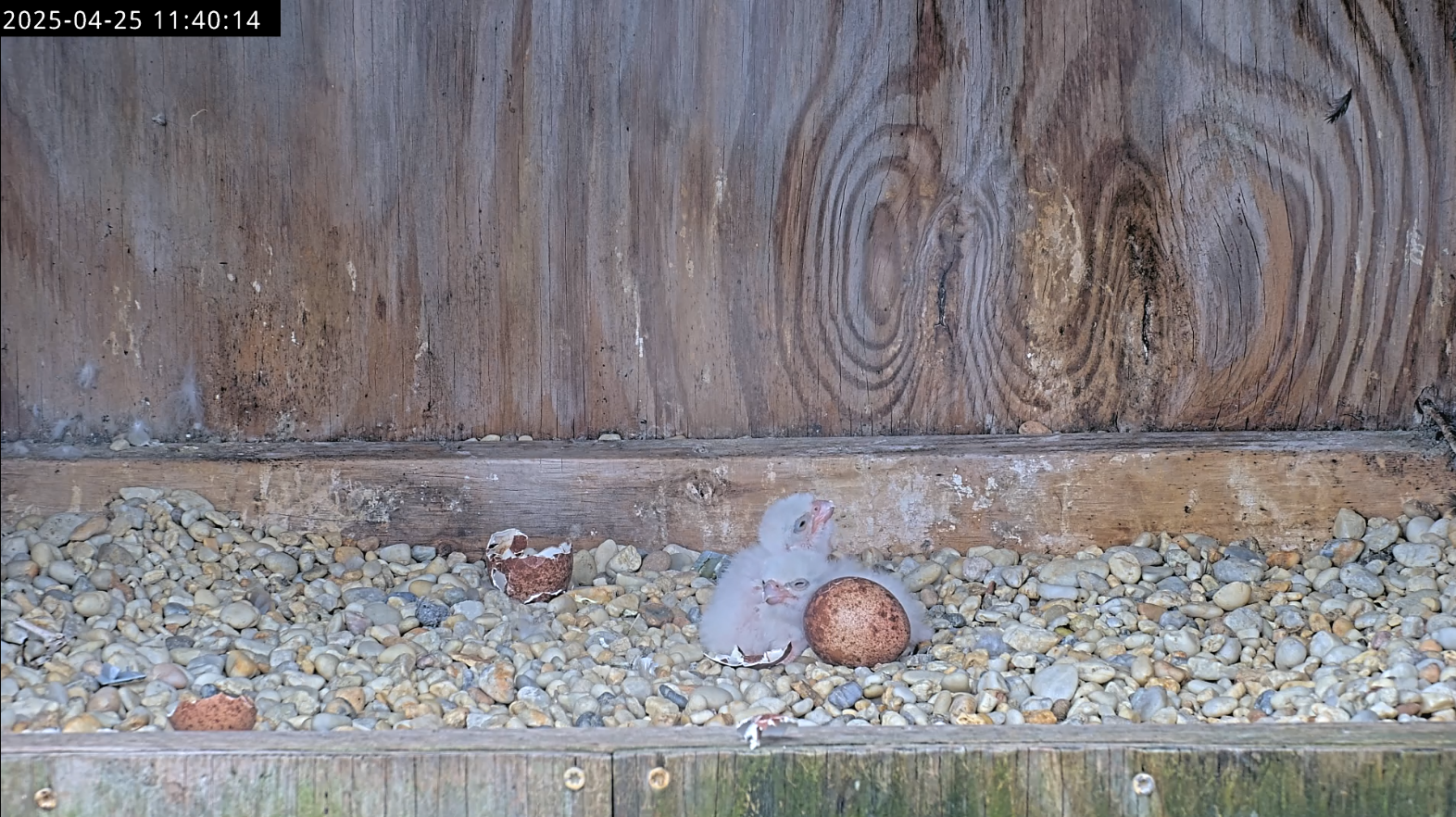
Two chicks visible during an incubation/brooding exchange.
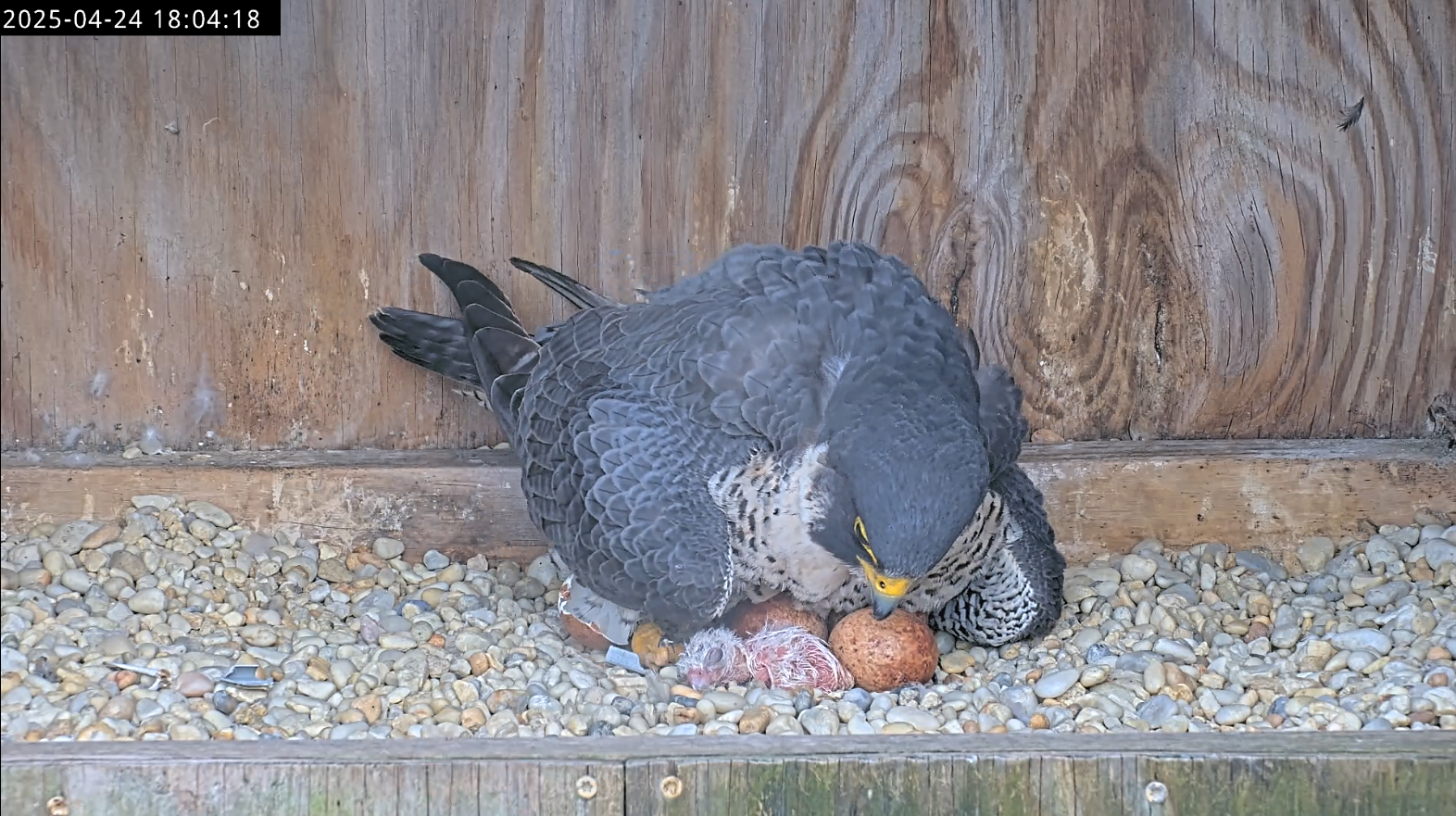
The first chick, beginning to dry.

The first chick to hatch, still partially in the egg shell.
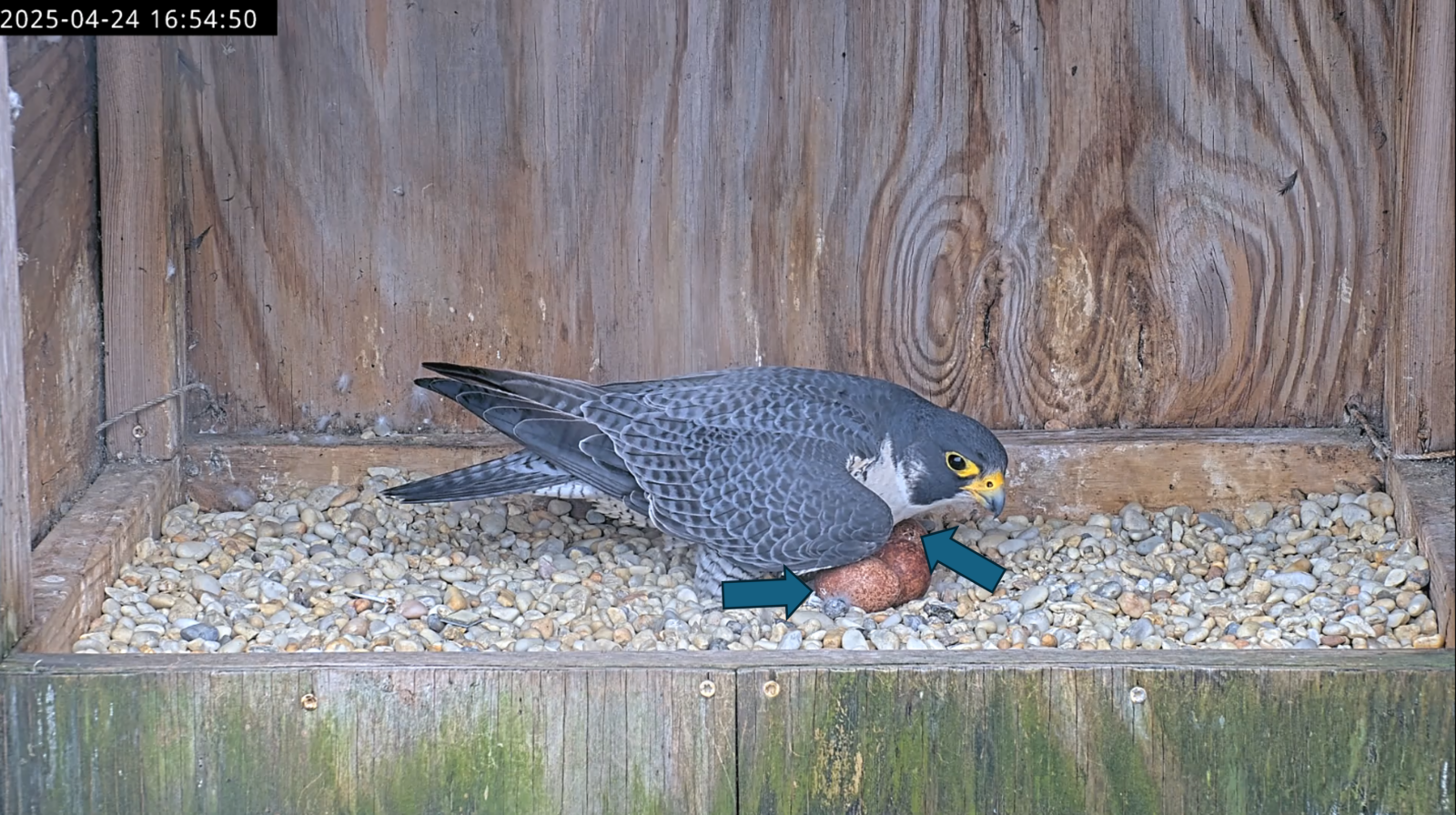
Pips in eggs indicated by the blue arrows.
